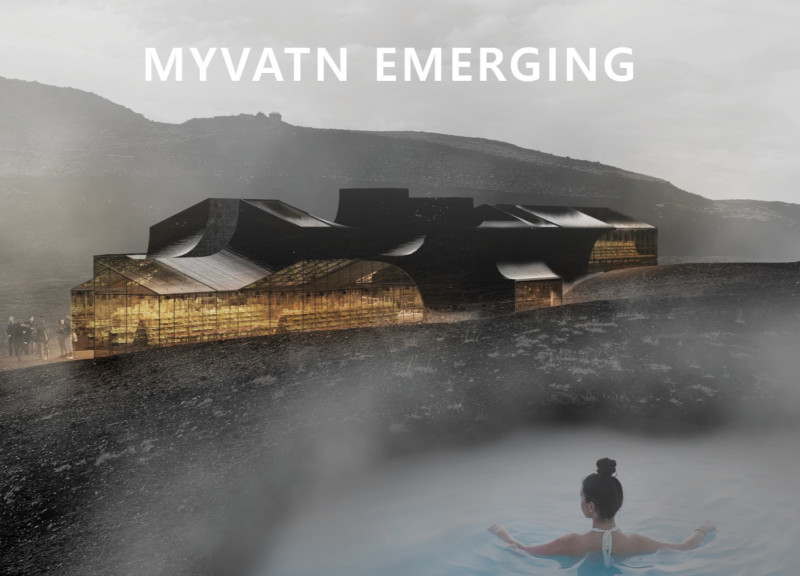5 key facts about this project
The design in the Myvatn region of Iceland explores the relationship between the landscape and the culinary experience through the integration of a Restaurant and Greenhouse. It focuses on sustainability and the unique geological features of the area, illustrating how food is produced and consumed. The layout is carefully structured to provide both distinct and interconnected experiences, guiding visitors to appreciate the connection between growing food and enjoying it as a meal.
Design Concept
At the core are two separate spaces: the Restaurant and the Greenhouse. Each functions independently, yet their forms engage in conversation with each other. This interplay encourages exploration of the site. The layout groups areas into two categories: the Green, for circulation between the greenhouses, and the Red, which includes the Food & Beverage sections. This arrangement simplifies movement and enhances the understanding of how food travels from the greenhouse to the dining table.
Sustainability and Environmental Engagement
The design places a strong emphasis on sustainability. Natural airflow is optimized through stack ventilation, which reduces reliance on mechanical systems. Skylights are skillfully positioned to capture natural light while framing the night sky. This connection between inside and outside not only brightens the spaces but also enhances the experience of being in such a beautiful location. Nature becomes part of the architecture, contributing to the overall atmosphere.
Lighting Strategy
A careful lighting strategy was implemented to protect the dark sky of the region. Illumination is directed downwards, minimizing light pollution. This approach highlights a commitment to environmental balance while respecting the area's night environment. Each architectural decision aligns with the surrounding landscape, reinforcing the responsibility to both the ecosystem and the local community.
Using local materials emphasizes the idea of sustainability and helps reduce transportation emissions. Every element supports the notion that architecture can fulfill practical needs while offering insights into food systems. The form of the Restaurant and Greenhouse stands out against the landscape, showcasing the relationship between the built environment and nature, while the design of the skylights captures the changing light throughout the day in a dynamic and engaging way.






















































